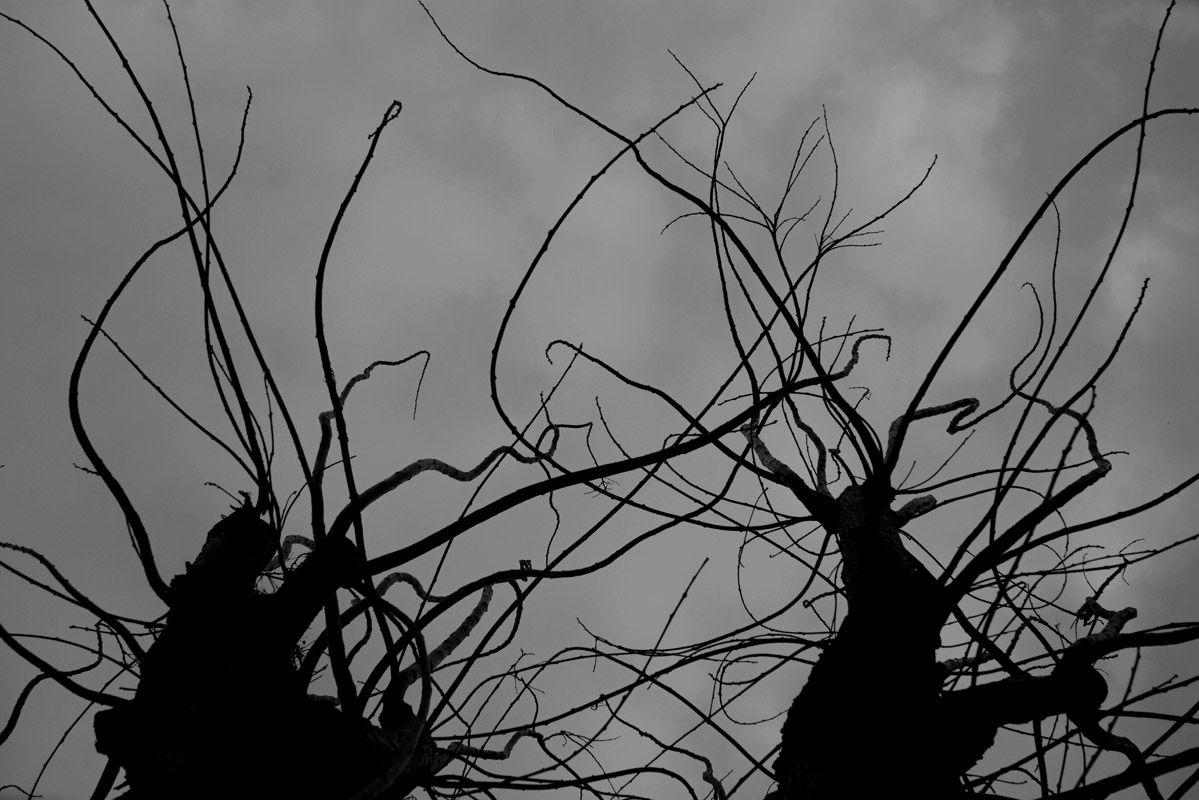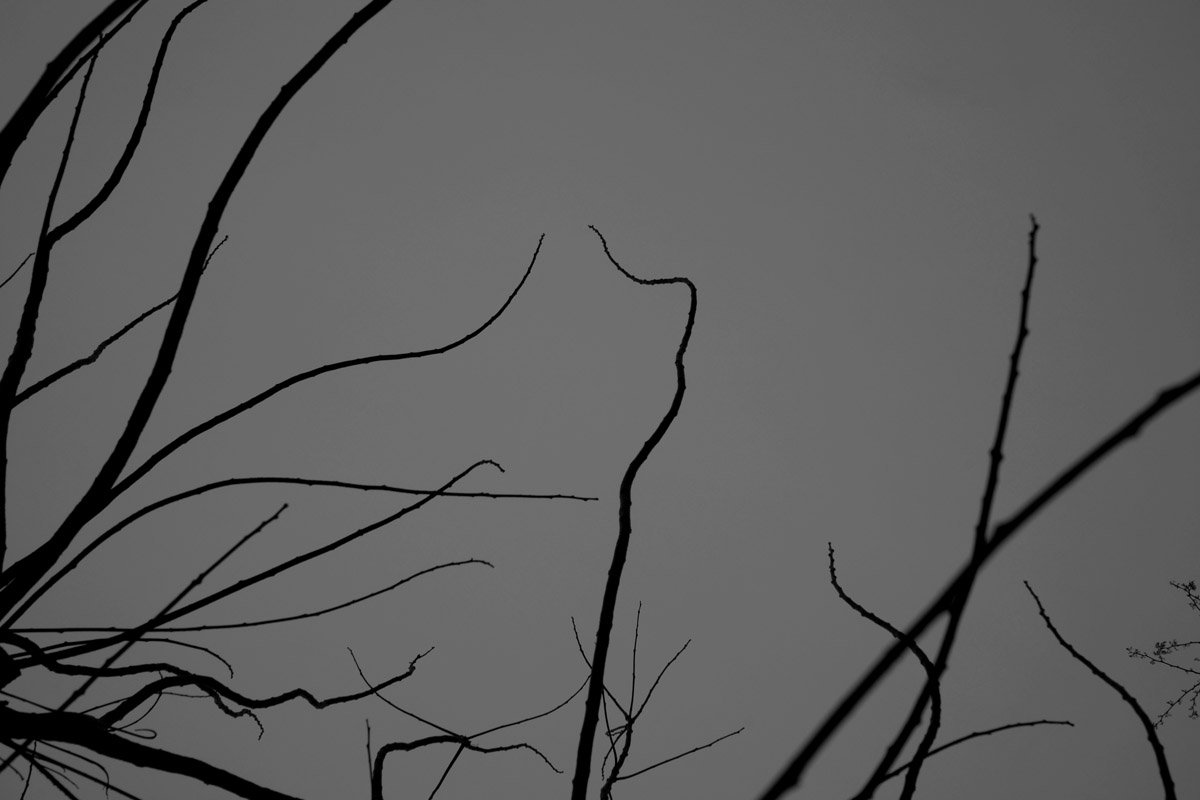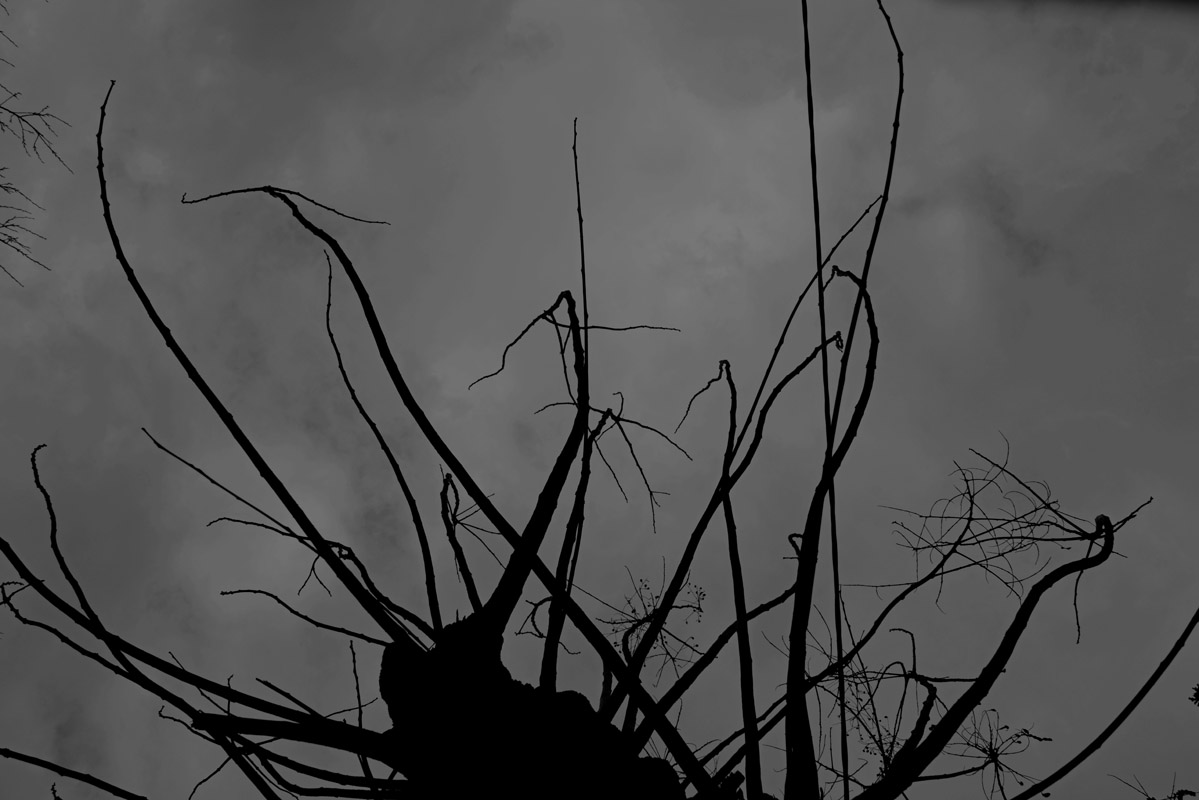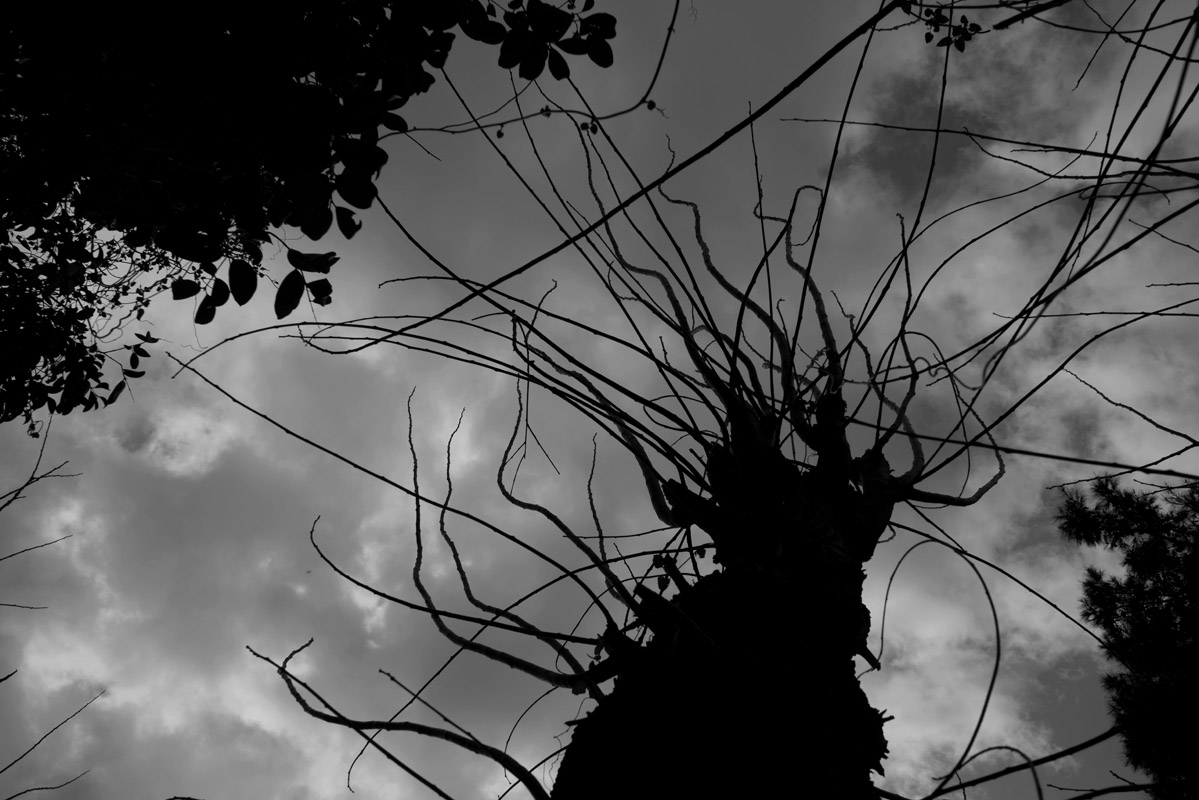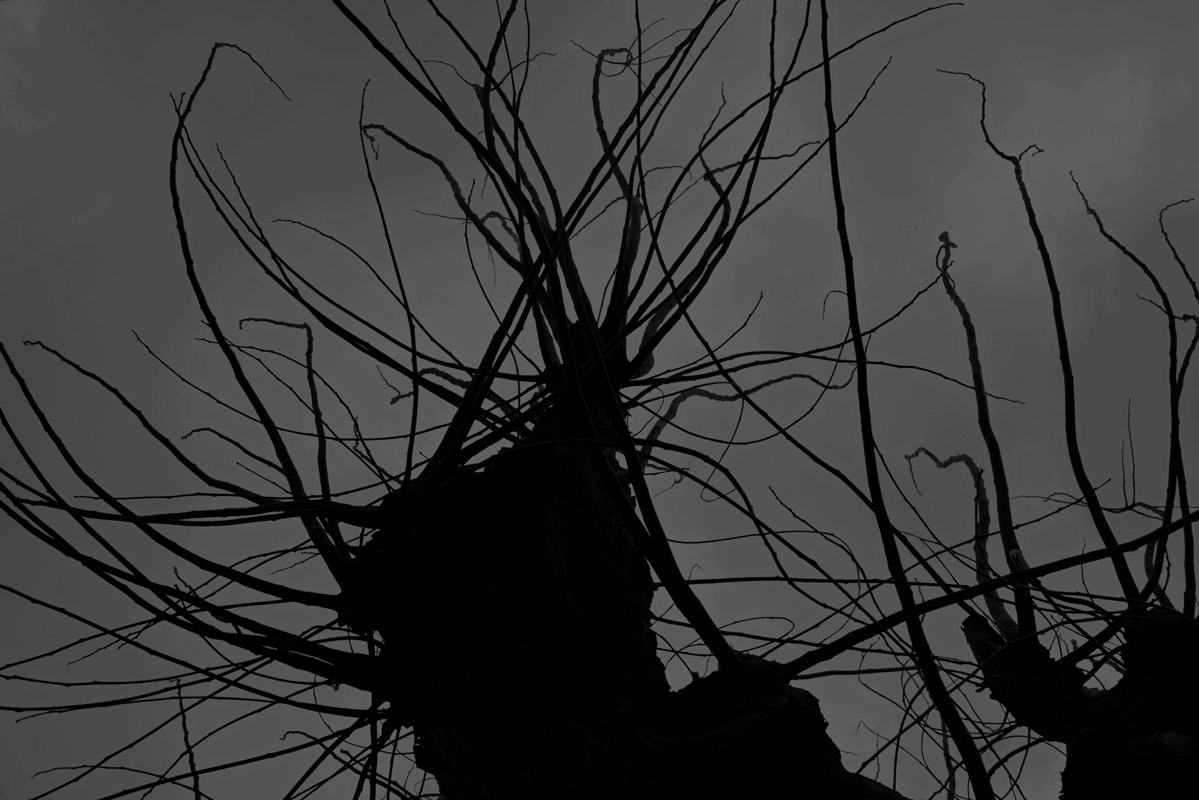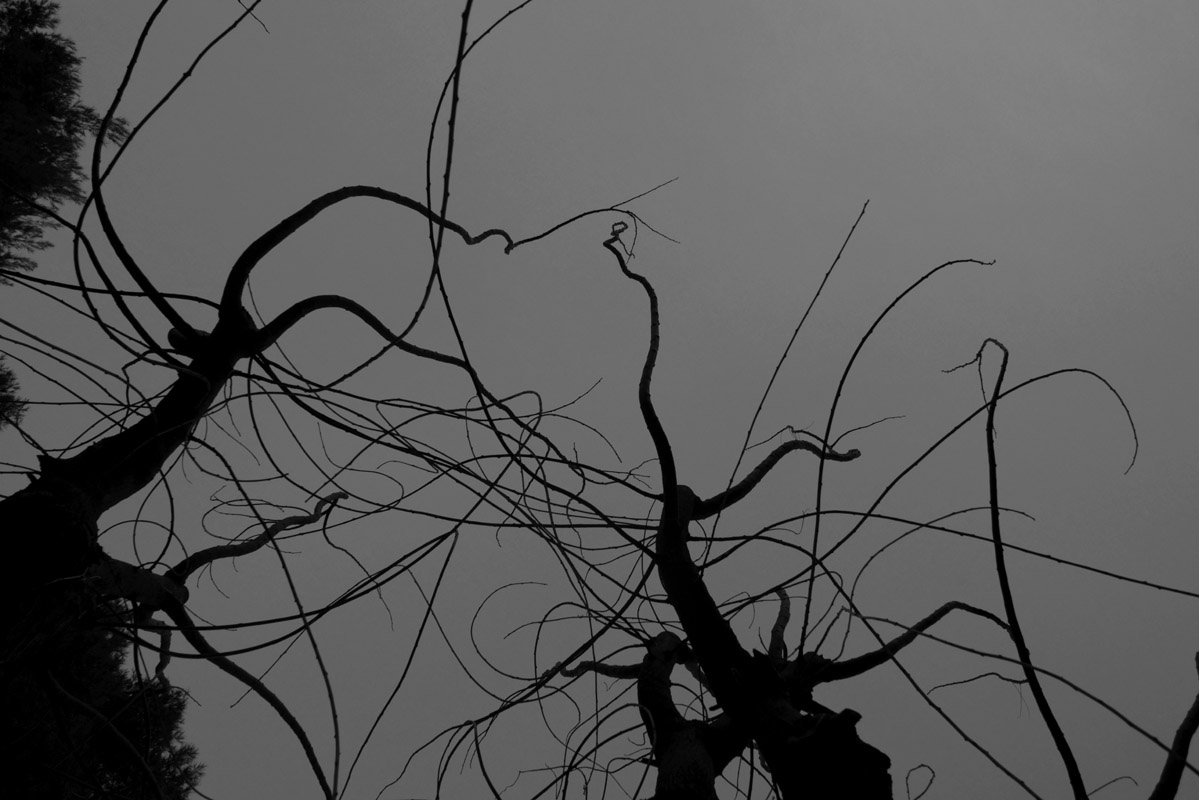In a new body of work entitled Quarantine Walks, Athens-based photographer Alexis Vasilikos turns his camera upwards to capture the leafless trees that line Athenian streets, as he wanders the empty suburbs of Erythrea and Kifisia during Covid-19 lockdown.
Quarantine Walks consists of twenty photographs that share the same visual style and subject matter, creating one consistent whole. This is a common practice of Vasilikos, whose series often consist of variations on the same theme or subject. For example, in Masks (2013-2020) he created a series of collages made with croppings of images masked in Photoshop, and his Latent Prints series (2020) features identical shots of shadows cast by tree foliage on a flat surface.
Instead of focusing on the empty streets and closed shops during the lockdown, the photographs in Quarantine Walks shift our attention towards the non-human margins of urban space. Indeed, with the exception of some electricity poles and cables, there isn’t much in these photos that reveals their urban context. In the absence of any colour, the photographs veer into abstract territory, allowing the viewer to also read them as linear drawings or expressionist outbursts in black ink.

Photographed against cloudy skies, the photographs feature leafless sophora trees (Sophora Japonica, known in English as the Japanese pagoda tree), a common sight on the streets of Athens. In Quarantine Walks, the sophoras stand bleak without any foliage, their branches following random, tendril-like patterns. Due to lack of staff in the city’s gardening services, the trees are pruned aggressively and between long intervals. As a result, the structure of their branches is not trained into a regular shape but grows in a wild state, until they are pruned again to remove all branches and leave the trunk bare. This explains the strange structures seen in the photographs, where young, slender branches spike out of thick, mature trunks.
“When we are talking about abstraction in photography, we need to consider something which is fundamental to the photographic image: time. […] [T]he more abstract the photograph becomes, the less evident is the presence of time. So from a philosophical point of view, abstract photography is a movement towards timelessness.” This excerpt, gleaned from the artist’s official website, although written as a note on photography in general, directs our gaze in relation to these images. If art is a shared space where common understandings of human life and values are reified, photography definitely fulfils that purpose alongside other art forms — in the sense that it too can become a timeless object, preserved in the public realm as a celebration of a shared world that exists against time.
The way that Vasilikos explains it above however points to a different understanding of timelessness in photography — that is, one that sees photography (and in particular abstract photography) as an instance where the sense of time is lost. Thus, timelessness is not about defeating time and impermanence (which echoes Arendt’s discussion of eternity and immortality), but more about losing time: falling into a state where the passing of time becomes inconsequential.

As we remain in quarantine, the importance of time’s passing diminishes. Days don’t pass fast or slow, they simply pass, following each other in an uneventful sequence. Especially for those who have lost their jobs and are confined in domestic idleness, the experience of passing time has changed dramatically. It has become more of a time-that-is-lost, in that we are losing our connection to time the same way that abstract photography does. Timelessness here carries nothing of the bliss and purity that civilisation promises through the preservation of commons, but feels more like Vasilikos’s dark trees: depressing, ominous and disorienting.
It is a challenge to sustain community and shared experiences amidst social fragmentation. The new commons (digital, online, disembodied, out of time) that have emerged as a result of putting entire societies under house arrest, attempt to simulate the public realm and its immediacy, its richness, but fail spectacularly at every attempt. When Vasilikos wanders the empty streets during quarantine to photograph, he walks on the verge of legality. At the same time, he averts his lens from the empty commons, as if not to take yet another painful photo of the public realm rendered void and obsolete. What he then comes across is a different void, which exists in the negative space amongst the branches of trees in early spring: there is definitely a promise there, but it also reveals the trauma of a violent separation from social life and an experience of time as something shared.

